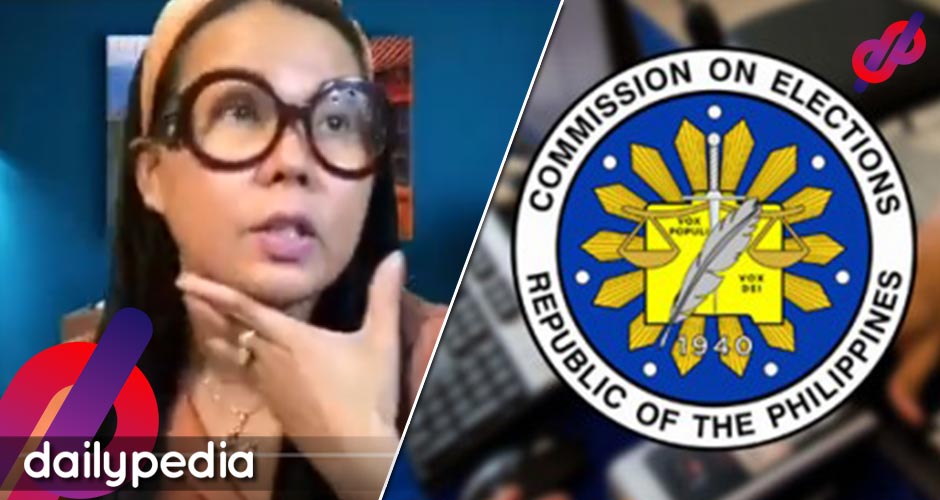Namfrel, a poll watchdog, has revealed software flaws in the automated election system for 2022. Despite the warnings of potential cheating, Comelec chose to ignore them.

This has led retired general Eliseo Rio to conclude that the presidential-VP race was rigged.
Meanwhile, a retired colonel is preparing impeachment charges against five poll commissioners for their refusal to present records, as the Supreme Court deadline has passed for Comelec to justify their actions. Namfrel has made an 89-page Final Report on the 2022 National-Local Elections available on its website.
Pages 23-24 of the report contain details of discrepancies found by the organization.
Specifically, the vote counting machine (VCM) source code differed from the hash code, suggesting possible tampering with the program.
Rio has raised doubts about the legitimacy of the 20 million votes for the presidential and vice presidential candidates received in the last hour of the 2022 election, stating that it would be physically impossible to achieve. As an electronic communication engineer, he said there were nine Comelec steps that the 107,345 precincts had to complete before transmitting the Vote Counting Machine (VCM) counts to the Transparency Server, which would have taken more than 30 minutes to complete.
The longest step was the VCM printing eight copies of all the candidates’ votes, including those for president, vice president, senator, party list, congressman, and local positions.
Rio previously served as the Secretary of Information-Communication Technology and the chairman of the Comelec Advisory Committee for the 2019 election.
Namfrel has been in charge of voter education, election monitoring, and quick counts for 65 years. It was also responsible for overseeing the random manual audit of the 2022 election results. Additionally, it was one of several organizations that reviewed Comelec’s 2022 preparations.
The human-readable source code comprises instructions for the VCMs, which programmers write. On the other hand, the hash code is a computer-generated fingerprint of the software.
“If a change in the software is introduced, a different hash code will be generated,” Namfrel explained.
In February 2022, Comelec uploaded the hash code to its website for IT experts to check. This code is a security measure printed on the VCM diagnostic report during startup. During Comelec’s demonstration of the election system on March 22, 2022, Namfrel’s IT team noticed a discrepancy.
The VCM System Hash Code shown during the demonstration did not match the one published during the second Final Trusted Build. Namfrel then emailed Commissioner Marlon Casquejo about it but has not received a response. Instead, Comelec posted on its website on March 24 a supposed admission from its international certifier Pro V&V that a human typographical error had occurred.
Namfrel sent another email to Commissioner Casquejo on March 25, requesting five documents related to Pro V&V’s compliance with hash code protocols and seeking independent verification. However, they did not receive a response.
“The process of building components into a system, which included the generation of the system hash, was never shown publicly. Aside from the VCM System Hash, no other hash codes were shared for a public check,” Namfrel said.
“Without the system hash generation in full view of stakeholders, the source code that Namfrel saw and reviewed could be different from what was used by the VCMs on Election Day. In layman’s terms, this software used by the VCMs on Election Day … could have been edited.”
Namfrel chairman Lito Averia dismissed Pro V&V’s excuse of a typographical error as “flimsy.” In an interview, he stated that Comelec’s contractor, who received millions of dollars, should not have manually encoded the hash code.
Rio, previously the deputy chief for research and development in the Armed Forces of the Philippines, claims that the massive influx of election results by 8:02 on election night was a deliberate attempt to influence voters.
According to him, Bongbong Marcos and Sara Duterte led the presidential and VP races from the start until the returns slowed down over four days. Rio alleges that the vote-counting machines were tampered with.
In November of last year, he petitioned the Supreme Court to compel Comelec to reveal the transmission logs before they were deleted. The court ordered Comelec to respond within ten working days of February 28. Retired Colonel Leonardo Odono also sought access to these identical Comelec records under his constitutional right to information.
Netizens also want Comelec to disclose transmission logs.
We need to demand for these transmission logs and investigate the other anomalies. https://t.co/F83YbbWSET
— Chris Tan (@imchristan) March 17, 2023
1/3
Maharlika: "why bbm at liza? Kasi ginamit nyo (smartmatic) during election? That is not really 31M? gusto nyo pumantay kay sarà siguro para masabing parehong popular, whatever" pic.twitter.com/qsgG02lu4k
— SpanishPinay (@Spanish_Pinay) March 16, 2023
It was obviously rigged but of course we need to move on right away because it's just pretty normal in this country. 🤡 https://t.co/UPb0jTcw6C
— Sydney (@sydneydavid7) March 18, 2023
Again, the COMELEC should do a better job of explaining this kind of 'irregularity'. https://t.co/WgpikIJVwu
— John Ultra (@jultra_) March 18, 2023
mga inutil @COMELEC https://t.co/0po7q59KV5
— Charlene 🇵🇭🇺🇸 (@gandang_charot) March 18, 2023
Motherfuckers https://t.co/iQf26YnPVP
— Rodnie San Pedro (@RodnieSanPedro) March 17, 2023
Only in the Philippines !#itsMORE you know what I mean … https://t.co/xXIL9fP5pr
— Mia Garcia (@aimfox) March 17, 2023
Since November, the retired colonel who sought access to Comelec records is now discussing with Congressmen the possibility of impeaching five of the seven commissioners for their “conspiracy of silence.”


